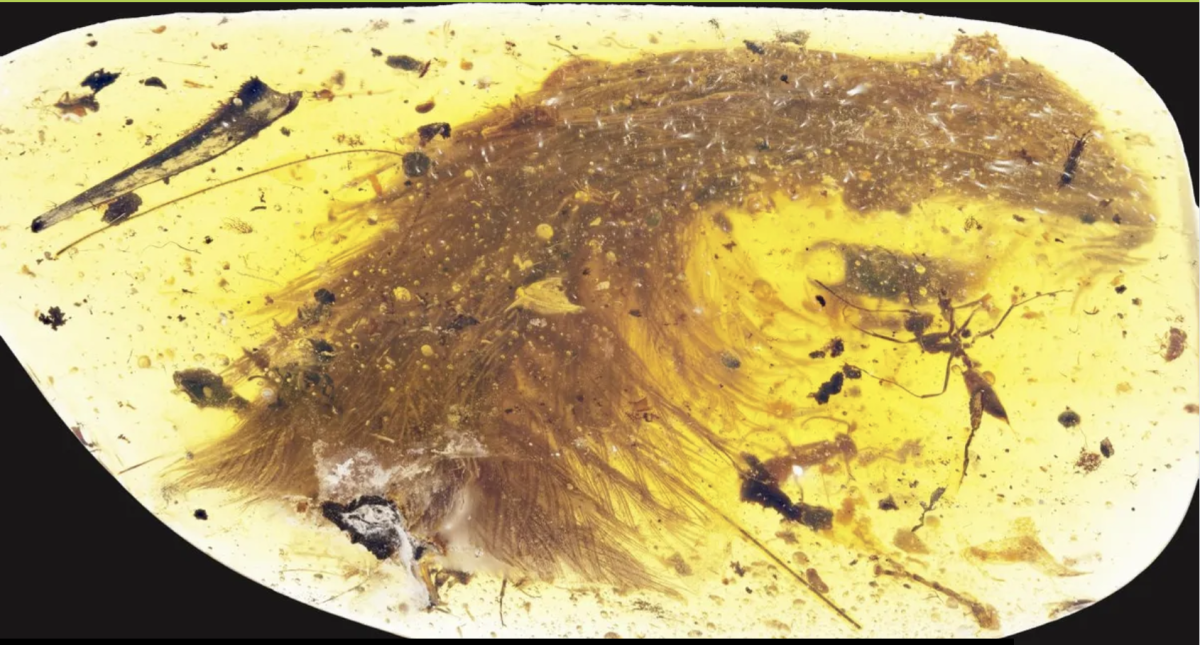
Is it a piece of plant matter or something more?
That’s the question paleontologists were asking of Lida Xing, who stumbled upon a hunk of amber at a market in Myanmar back in 2015.
Xing purchased the “trinket”, awed by what she believed to be plant matter inside of it, but soon realized she might have something more valuable on hand, and reached out to the Dexu Institute of Palaeontology to see if they might be interested.
They were.
Instead of a mere paperweight, Xing had a 99-million-year-old fossil on her hands, and one that included something more rare than even a plant encased in amber.
In 2016, Xing and co-authors used CT scanning and microscopic observations to peer deep inside the amber to investigate the trapped matter, discovering that the specimen was the feathered tail of a young coelurosaur – the clade containing all theropod dinosaurs more closely related to birds than to carnosaurs like the Velociraptor and Tyrannosaurus.
“The new material preserves a tail consisting of eight vertebrae from a juvenile; these are surrounded by feathers that are preserved in 3D and with microscopic detail,” study co-author Ryan McKellar said in a statement in 2016.
“We can be sure of the source because the vertebrae are not fused into a rod or pygostyle as in modern birds and their closest relatives. Instead, the tail is long and flexible, with keels of feathers running down each side.”
Basically, the results confirm that these are dinosaur feathers, not bird. And the find is the first of its kind.
“This is the first time we’ve found dinosaur material preserved in amber,” McKellar told BBC News.
The belief that some dinosaurs were covered in feathers rather than scales has picked up steam in recent years, bolstered by discoveries like Xing’s.
The artifact was so well preserved that they were able to make strong educated guesses about the details of the feather, which is believed to have been chestnut-brown on top with a pale or white underside.
The feathers also lacked a well-developed central shaft, which indicates that the barbs and barbules of modern feathers – the two finest tiers of branching – evolved before the shaft.
The sample also contained traces of ferrous iron, found in hemoglobin, which is found in blood.
The juvenile may well have gotten trapped in the amber and died, helping preserve much of its matter.
“It’s amazing to see all the details of a dinosaur tail – the bones, flesh, skin, and feathers – and to imagine how this little fellow got his tail caught in the resin, and then presumably died because he could not wrestle free,” Professor Mike Benton said to the BBC.
Though not the most dignified of deaths, the young dinosaur has an important after life, helping paleontologists and researchers learn more about his species.
It’s a good thing that what might have passes as a simple knick knack was given a second chance!
If you thought that was interesting, you might like to read about a second giant hole has opened up on the sun’s surface. Here’s what it means.